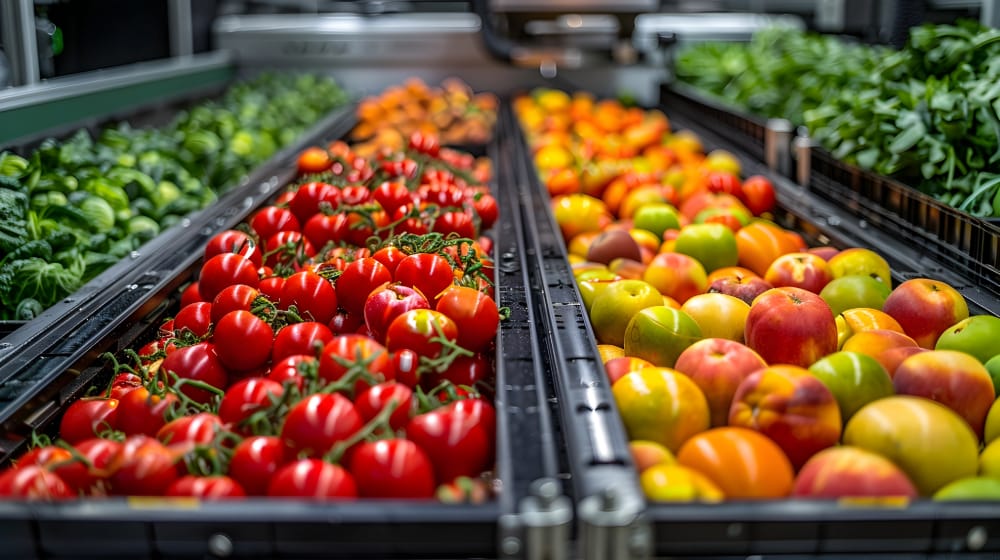The food and beverage industry represents a huge portion of the economy, amounting to around $1,011 billion in 2024, with an expected annual growth of 3.81%. Despite being such a large contributor, there have been huge losses within the industry that have come directly from supply chain issues. In fact, a survey from WTW found that 73% of business and industry leaders stated supply chain-related losses have been higher than expected over the previous two years.
For the industry to strengthen the supply chain and ensure that losses are mitigated as much as possible, it’s important to understand where the disruptions occur the most Chris Thompson, Operations Director at Electrix International, leading suppliers of stainless-steel electrical enclosures for a wide range of industries, have offered expert insight into the issues facing supply chains in the food and beverage industry and how best to combat them.
The freight recession
The global shipping industry has been experiencing a recession in freight that has continued for longer than anticipated. According to data from DAT, the trucking industry saw a net loss of 29,000 carriers in 2023, with more expected to go throughout 2024.
Reduced freight vehicles and activity can result in downward pressure on shipping rates. This might sound positive for businesses looking for lower transport costs, but it can emphasize underlying economic weakness as well as decreased consumer spending. This is a huge concern for the food and beverage industry, which relies on consumer spending to drive economic success.
The freight recession directly affects supply chains, with raw materials and finished products being delayed in delivery. This can impact the manufacturers as far back as they are experiencing a surplus of inventory in warehouses due to a lack of delivery options. This feeds down to retailers and restaurants struggling to maintain adequate stock levels, affecting their customer base and growth.
Cargo theft
One of the key struggles within the supply chain is the noticeable spike in cargo theft affecting stock and supply. A CargoNet report on theft statistics found that there was a 57% increase in events of cargo theft in the second quarter of 2023 compared to the previous year. The total amount comes to more than $44 million in shipments, with the average value per event increasing to more than $260,000 from $100,000 due to the theft of high-value shipments.
Theft that occurs within the industry’s supply chain massively impacts supermarkets’ ability to stock their shelves for consumers. Similarly, it has a knock-on effect on the restaurant industry, as they’re unable to source the ingredients required for their menu items.
The cost faced by businesses extends beyond the price of the goods but also encompasses the expenses related to insurance claims, increased security for prevention, and even reputational damage that can occur. Costs within the industry also filter through the supply chain, with perishable items getting lost, which can lead to shortages and price fluctuations, as well as consumers facing limited availability of specific products or high prices at the point of sale.

Strategies for resilience
This is why companies in the industry must employ strategies to promote resilience and adaptability. Particularly, proactive measures can help to reduce the impact these disruptions can have so that progress isn’t halted. One aspect of the strategy should always be keeping on the cutting edge of investment in technology to maintain visibility and security throughout the supply chain. This can be in the form of GPS tracking, RFID tagging, and real-time monitoring devices to track the movement of goods more efficiently, as well as being able to react quickly to incidents of theft or delays.
Diversifying sources within the supply chain is also important for strengthening and avoiding disruptions. With a diverse supplier base and investing resources into finding alternative transport routes, businesses can increase flexibility and establish strategic partnerships with reliable logistics providers. This can, in turn, make processes more efficient and streamlined.
One solution for strengthening is for the industry to build strong relationships with government agencies, law enforcement, and associations to collaborate and share information. This can help to develop better and more proactive strategies to address the challenges within the supply chain.
Proactive approaches are crucial to mitigating risk management within supply chains. With enough preparation and proactive strategizing, they can help navigate turbulence and build resilience.
Sources
https://www.statista.com/outlook/cmo/food/united-states
https://www.its4logistics.com/blog/freight-market-outlook-and-trucking-industry-forecast-2024
https://www.cargonet.com/news-and-events/cargonet-in-the-media/2023-Q2-theft-trends/






